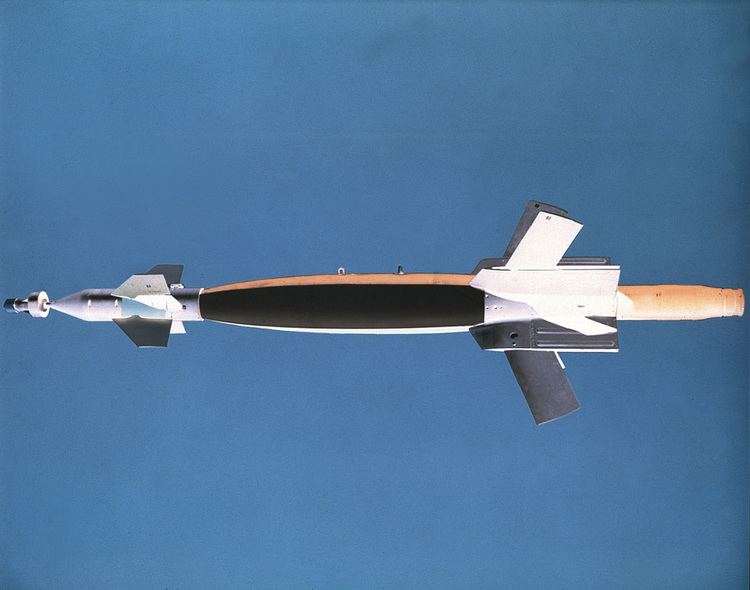Place of origin United States Length 4.3 m (14 ft 1.2 in) | In service 1985 Weight 582 kg (1,283 lb) | |
 | ||
Type Rocket assisted, low-level, laser-guided bomb | ||
AGM-123 Skipper II is a short-range laser-guided missile developed by the United States Navy. The Skipper was intended as an anti-ship weapon, capable of disabling the largest vessels with a 1,000-lb (450-kg) impact-fuzed warhead.
It is composed of a Mark 83 bomb fitted with a Paveway guidance kit and two Mk 78 solid propellant rockets that fire upon launch. The rockets allow the munition to be dropped farther away from the target than could free-fall bombs, which helps protect the delivery aircraft from surface-to-air-missiles and anti-aircraft artillery near the target.
The AGM-123 was developed at the China Lake Naval Weapons Center and carried by the A-6E Intruder, A-7 Corsair II, and F/A-18.
Operational History
Four Skipper missiles launched by A-6E Intruders contributed to sinking the Iranian frigate Sahand during Operation Praying Mantis on April 18, 1988.
Skipper missiles were also fired in Operation Desert Storm against Iraqi surface vessels by A-6s and U.S. Marine aircraft.
